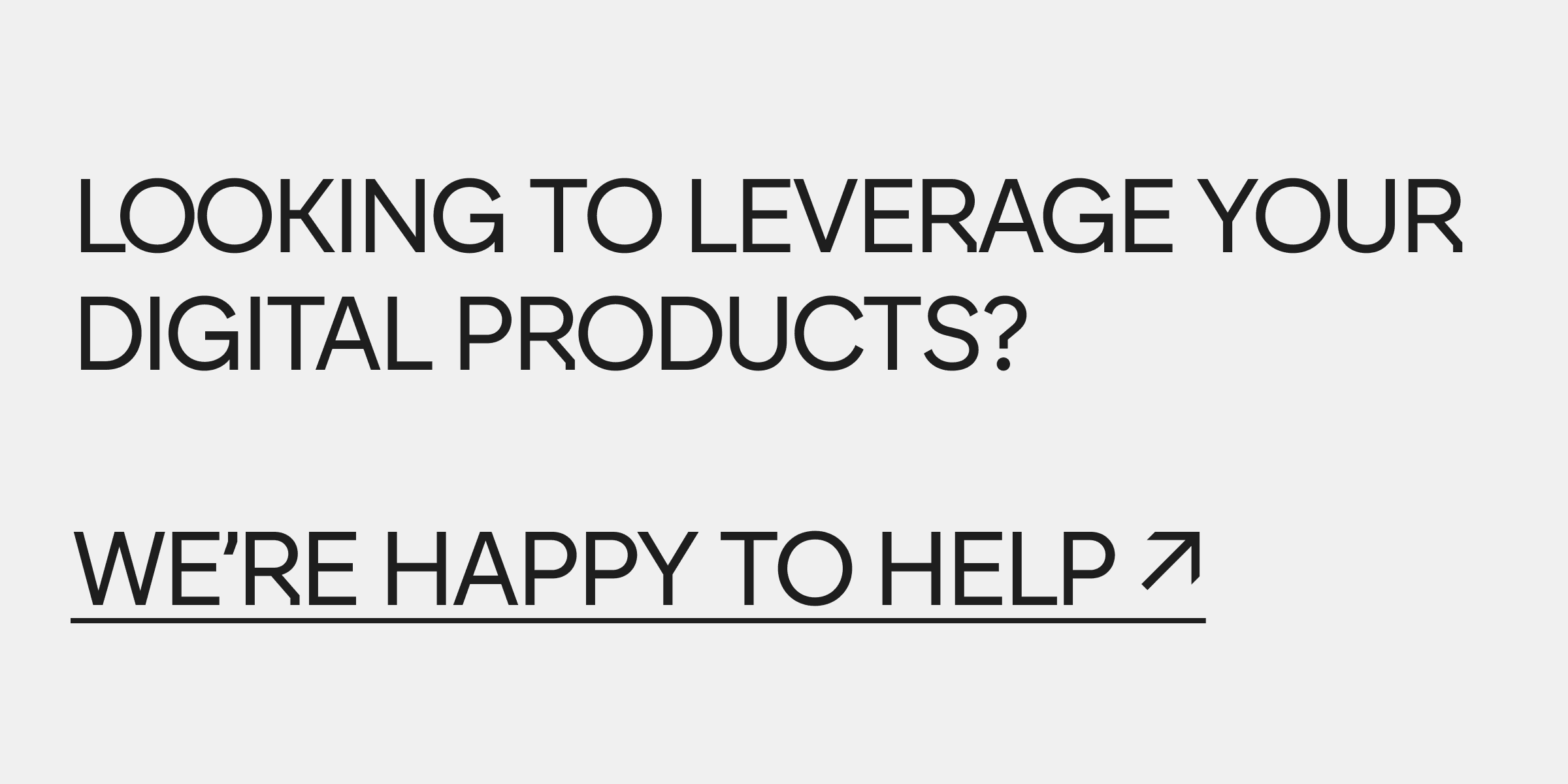The e-commerce landscape is fiercely competitive. To stay ahead of the game and boast a high conversion rate, you need an intuitive and user-friendly online store. The key here is to focus on one particular page, and that page is the product detail page. By revamping it, you should be able to see significant growth in conversion rates in no time.
If you have no idea where to start, we are here to help! In the following article, we will go over every single thing you need to know about product detail pages. First, we're going to start with a basic definition. Then, we will go over key product detail page elements that you should be paying attention to. Last but not least, there is going to be a list of tips for further improving any product page's conversion rate.
What Is Conversion Rate in E-Commerce and How Do You Improve It?
To put it simply, conversion rate is the percentage of visitors who take a desired action on a site, such as making a purchase or subscribing to a newsletter. The higher the conversion rate, the better an e-commerce platform is performing. Improving it requires a combination of understanding one's target audience, presenting potential buyers with an intuitive user experience, and ensuring that each and every element of the buying process, especially the product detail page, is meticulously crafted.
Read also: Website Redesign in 2025: The Complete Guide
What Does PDP Stand For?
In e-commerce, it typically stands for product detail page. It's the page on an e-commerce website where specific details about a particular product are displayed. It usually includes the product title, product images or videos, a detailed product description, and price, among other things.
When it comes to online shopping experience and e-commerce stores, product pages play a critical role in a customer's purchasing journey. It should come as no surprise, though. A product detail page helps customers decide whether a certain product is worth purchasing. For that reason, properly designed and optimized product pages can significantly influence conversion rates of any online store.
What Is the Difference Between a PDP and a PLP?
While PDP stands for product detail page, PLP stands for product listing page. A product listing page is a collection of various products, often presented in a grid or list format. In contrast, a product detail page delves deeper into one specific product. It offers detailed product descriptions, product images, product videos, online reviews from other online shoppers, and more.
What Is a PDP in UX and Why Is It So Important?
In user experience, a product detail page is a pivotal touchpoint. It's the moment of truth where a potential customer decides whether or not to make a purchase. A well-designed product detail page can communicate the value proposition of a product, instil trust in the brand, and provide the necessary information for a target customer to make an informed purchasing decision.
What Product Details Should Be Included on a Product Detail Page?
A comprehensive product detail page not only details the primary attributes of the product, but also addresses logistical concerns, instills buyer confidence, and facilitates a smooth transaction. To craft effective product pages, retailers should focus on several key features, ranging from product images and product descriptions to user-generated content and shipping information.

Product Images
Product images play a pivotal role when it comes to shopping online. Given that customers can't physically inspect a product, clear, high-quality images bridge an important sensory gap. For that reason, it's essential to provide prospective customers with multiple angles and close-ups to showcase a product's features and finer details.
When it comes to fashion or wearable items, lifestyle images depicting the product in use can give customers a sense of scale and style. Adding in a zoom functionality, providing alternate views, and using images and video content that accurately represent the product's color and texture could also help. Sure, it's not going to be the same as an in-store experience. Nevertheless, in the majority of cases, it's more than enough to help shoppers decide whether a product is worth purchasing.
Product Description
The product description provides essential information about the product, serving to both inform and persuade potential buyers. A well-crafted description should detail the product's features and its core components, as well as potential applications or use cases.
While technical specifications are necessary for many products, weaving the said specifications into a narrative or presenting each one in a digestible format, such as a list with bullet points, can be more engaging. In addition, the language used should resonate with the target audience and be clear and concise.
It's also worth noting that detailed descriptions can help you optimize a product detail page for search engine crawlers. You just need to make sure that each product description contains a reasonable number of relevant keywords. With such a description, the products you're selling might rank higher in search engine results pages, which could help you attract a large number of potential buyers organically. If you don't know much about search engines, here's our guide to preparing a website for search engine optimization.
Price
Price is one of the most critical factors in a purchase decision. Clearly displaying the price, including any discounts or promotions, is essential for transparency. It's also beneficial to provide context, such as comparing the discounted price with the original price.
For higher-priced items, offering instalment options or highlighting available payment plans can make the product more accessible to potential buyers. Ensuring that the price displayed is accurate for the user's location, considering currency or regional variations, can also enhance customer experience and trust.
Payment Methods
As the customer navigates the checkout page, the payment methods should be clearly displayed. It provides clarity, as well as reassures the customer at a critical juncture, reducing cart abandonment. You should also consider having a dedicated web page where each payment method is elaborated upon, detailing the process, any fees, processing times, and security features.
Listing accepted payment methods, from credit cards to digital wallets, offers transparency and sets clear expectations. It can also influence one's purchase decision. If a customer's preferred payment method is accepted, the customer in question might be more inclined to complete the purchase.
Availability
Product availability informs the customer whether an item is in stock, out of stock, or available for pre-order. Clearly displaying such important information can influence the buyer's decision, as knowing a product is readily available can instigate an immediate purchase. On the other hand, seeing that an item is out of stock might lead to exploring alternative products or vendors.
Shipping Costs
To ensure transparency, it's essential to provide clear details on shipping costs, including potential taxes or additional fees. Offering a shipping calculator or automatically updating the shipping details based on a user's location can also be effective. It prevents surprises at checkout and ensures the customer feels informed, reducing cart abandonment and improving user experience.
Return Policies
By clearly stating the return policy, including the duration within which returns are accepted, the specific conditions under which products can be returned, and the step-by-step process to initiate a return, businesses can alleviate any reservations a potential buyer might have. It assures the customer that, if unsatisfied, there's a clear path to rectification. Furthermore, it fosters long-term trust and loyalty to the brand.
Warranty
A warranty is more than just a promise. It's a testament to a company's belief in its product's durability and quality. It communicates to customers that the brand stands by the quality of its products and is ready to address any unforeseen issues.
Typically, warranty information should specify the length of the warranty period and precisely what it covers. For instance, some warranties may only cover specific parts of a product, while others might cover the entire product. Some might offer repairs, replacements, or refunds, depending on the nature of the issue.
By being transparent and offering a comprehensive warranty, businesses can give potential buyers peace of mind. It's particularly vital for high-value items, where the financial investment is considerable. It's also worth noting that a well-laid-out warranty can serve as a competitive advantage, potentially swinging a buyer's decision in favor of one product over another.
Product Variants
Often, a single product might come in various sizes, colors, or other customizable attributes, also known as product variants. An effectively designed product detail page should allow customers to easily view and select a certain variant without navigating away from the page. By presenting product variants in an organized and intuitive manner, retailers can enhance the shopping experience, making it seamless for customers to find exactly what they're looking for.
However, if not handled correctly, product variants can become a search engine optimization nightmare. For instance, without the proper coding and structure, search engines might interpret each product variant as a separate product page, leading to content duplication issues. Such problems can negatively impact a website's search engine ranking, making it harder for potential customers to discover its web pages organically.
To prevent such a problem from happening, it's essential to implement canonical tags to indicate to search engines which version of a page is the primary one. Doing so ensures that the main product page is indexed properly. Furthermore, using tools like schema markup can help a search engine better understand the relationship between the main product and its variants, thus enhancing search engine performance.
Social Proof
Social proof is the psychological phenomenon where individuals look to the actions and opinions of others to guide their own behavior, particularly in uncertain situations. In the context of shopping online, it means that potential buyers are influenced by the experiences, feedback, and choices of previous customers.
Incorporating social proof into the design and content of an e-commerce site can significantly enhance its credibility and influence over potential buyers. However, it's essential to ensure that the social proof used is genuine. Fabricating reviews or testimonials can quickly backfire, leading to a damaged reputation and a loss of trust among customers.
In essence, you should definitely leverage social proof. It acts as a bridge of trust between online retailers and their potential customers, filling in the sensory gaps inherent in online shopping and nudging customers closer to making a purchase. You just need to make sure that it's authentic.
User-Generated Content
Allowing users to upload their own product photos and answer questions about the product helps build a sense of community around it. User-generated photos provide real-world perspectives, showcasing the product in varied settings and uses. Then, by allowing users to answer questions, potential buyers can gain insights and clarifications from those who already own the product. Both of these features heighten trust and offer greater transparency about the product's value and functionality.

What Makes a Good PDP Design?
An effective product page template can significantly influence a visitor's purchase decision. If you don't know what creating such a template is about, we're here to help! Read on for a list of principles and tips for creating an attractive and effective product page layout.
Above The Fold
Above the fold is a term that originates from the newspaper industry. Traditionally, newspapers are displayed folded in half, with only the top portion of the front page visible to potential buyers. The said top portion is prime real estate for newspapers. It contains the headlines and images intended to capture a reader's attention and entice them to buy or read further.
In digital design, especially web design, above the fold refers to the portion of a webpage that's visible without scrolling. It's the first part of the website a visitor sees upon landing on the page. Just as with newspapers, it's a section that's considered to be highly valuable. It's the user's initial interaction with a website.
If the content above the fold is not engaging or relevant, users might not be compelled to scroll further, potentially missing out on important information or actions below. With that in mind, make sure that your store's above-the-fold area presents a clear value proposition. By effectively conveying the inherent value or benefits a user can expect, it sets the tone and context for their entire browsing experience, ensuring they understand the relevance of the content and its alignment with their needs or interests.
In addition to a compelling value proposition, integrating engaging animated images or videos plays a crucial role in capturing and retaining the attention of visitors. By utilizing high-quality visuals that resonate deeply with potential customers, not only is the user experience enhanced, but it also serves to reinforce the brand's message.
Multiple Angles
Displaying products from multiple angles offers potential customers a comprehensive understanding of what they're investing in. Imagine shopping for a pair of shoes and only seeing the front view. You'd miss out on the design of the heel, the sole, or even the side profile. By presenting multiple views, online store visitors can virtually inspect the entirety of a product, reducing uncertainty and increasing the likelihood of purchase.
Zoom Function
The devil is often in the details, especially when it comes to online shopping. The texture of a fabric, the intricacy of a design, or the fine print on a product can often be the deciding factor for a potential buyer. Allowing users to zoom in on product images ensures that they can observe such minute details up close, much like bringing an item closer to one's eyes in a brick-and-mortar store. It's a feature that instills confidence in the shopper about the product's quality and attributes.
Highlighted Features and Benefits
A product can have numerous attributes, but not all are of equal importance to the consumer. It's vital to differentiate between standard features and a product's unique benefits that set it apart. Highlighting them allows customers to understand not just what the product is, but why it's valuable or superior to other options.
In the vast landscape of a product page, not all information carries equal weight. The hierarchy in design ensures that the most critical pieces of information, like the product's title and price, capture the viewer's attention first. It doesn't just aid in quicker decision-making but ensures that the user doesn't miss out on any essential details amidst the plethora of information presented.
Whitespace
In design, whitespace isn't merely empty space. It's a powerful tool that ensures a clean, uncluttered presentation, directing the viewer's attention to where it's most needed. By strategically using whitespace, designers can make product pages more readable, navigable, and user-friendly. It effectively enhances user experience, ensuring that the consumer doesn't feel overwhelmed while searching for product details.
Consistency
Consistency is the backbone of trust in design. When fonts, colors, and layouts maintain uniformity throughout the site, it not only makes the site aesthetically pleasing, but also intuitively navigable. A consistent design language ensures that users don't feel lost or disoriented as they navigate between pages, creating a seamless shopping experience.
Mobile Optimization
With an ever-increasing number of mobile users accessing e-commerce platforms via mobile devices, it's no longer a luxury but a necessity to ensure mobile optimization. A responsive product detail page ensures that images resize, text remains readable, and navigation is touch-friendly regardless of the screen size. Such optimization ensures that the user experience is consistent and efficient, irrespective of the device being used.
How To Make a Product Page’s Conversion Rate Increase?
If you want to create product pages that bring in huge profits, it's important that you make the said pages fast, intuitive, and deeply compelling. Let’s delve into these crucial aspects! In the following section, you're going to find a bunch of useful tips for creating a high-converting product detail page that could rival the best product page examples on the market.
Regular Testing and Optimization
User behavior and preferences are constantly evolving. To ensure that a product detail page is effective and user-friendly, regular testing is paramount. Employing methods like split testing allows businesses to understand user preferences better, refining elements based on real-world feedback. Having such an iterative approach ensures that a store's product pages remain optimized for conversions and provide a superior user experience for months to come.
Loading Speed
A product detail page's loading speed has become one of the most significant factors in determining its conversion rate. Quick load times are essential because visitors are less likely to wait around if a page takes too long to display its content. A delay of even a few seconds can mean the difference between a sale and a missed opportunity.
With that in mind, you should prioritize the order in which certain product detail page elements load in. When doing so, make sure to pay special attention to above-the-fold content. It ensures that users perceive a product detail page as fast, even if other key elements are still loading.
Aside from that, you should optimize high-quality product images. While high-quality product photography sure can make a product more attractive and enticing, it can also slow a product detail page down quite a bit. So, make sure to compress any image you're going to be using on product landing pages.
Aside from that, you should lazy load images and product videos. In other words, you should make it so that off-screen images don't load in until the user scrolls down the page. The reason why it helps with page speed is simple. The fewer elements have to load in when a user is on a product page, the faster the said product page is going to be. In case you'd like to know more, check out our article about e-commerce speed optimization.
Up-Selling
Up-selling is a strategy where you encourage customers to purchase a more expensive version of the item they're considering or add-on services that can enhance their product experience. It's a powerful tool to increase the average order value. For example, imagine that a customer is looking at a basic model of a laptop. In such a scenario, showing them a slightly more advanced version with better features at a modestly higher price can tempt them to upgrade their choice.
The key to successful up-selling lies in subtlety and relevance. The alternatives should be genuinely better and tailored to the customer's perceived needs. It's not about pushing the most expensive product, but about providing value that justifies the additional expense.
Incorporating up-selling strategies into a product page's design is a delicate art. When a visitor is interested in a specific product, intuitive design elements can subtly guide them towards a premium version of that product. This could be achieved by employing visually distinct sections or panels that showcase upgraded versions, using appealing graphics and strategic placement to draw the visitor's attention. The design should make these options appear as a natural extension of the user's browsing journey, not aggressive pushy sales tactics.
Cross-Selling
While up-selling is about upgrading, cross-selling aims to sell complementary products. If a customer is purchasing a camera, they might be interested in a camera bag or a tripod. By showcasing related products, e-commerce platforms can increase the total cart value of a single purchase. The products in question should complement the primary item in the cart, enhancing its use or longevity. Offering bundle deals or discounts for purchasing related products together can further incentivize customers to take advantage of cross-sell opportunities.
Cross-selling on a product detail page demands a harmonious blend of design and strategy. Visually captivating sections highlighting complementary products can be integrated seamlessly into the product page's layout. For instance, a strategically placed slider or carousel showcasing items that are frequently bought together can entice users to explore and add more to their cart. The key lies in designing these elements in a way that they feel like helpful suggestions rather than forced additions.
Clear Call-to-Action
The call-to-action button on a product page is its beating heart. Its design needs to strike a balance between prominence and elegance. Utilizing contrasting colors, dynamic shapes, or even subtle animations can make the call-to-action stand out. Furthermore, its placement is crucial. Ideally, it should be easily visible without the need for scrolling, ensuring a smooth transition from product exploration to purchase.
Intuitive Checkout Process
Even with the perfect product detail page, a complicated checkout process can deter potential buyers. Simplifying the checkout process, reducing the number of steps, and ensuring transparency can significantly boost conversion rates. Additionally, allowing guest checkouts without mandatory account creation can cater to those seeking a quick purchase.
User-Friendly Design
While a product detail page needs to be informative, an overload of information can overwhelm and confuse visitors. A balance between aesthetics and functionality is vital. A clean layout, intuitive navigation, and prominent placement of key elements can enhance user experience, making the buying process straightforward and pleasant.
Attractive Content
Content should go beyond mere product page descriptions. Engaging narratives, storytelling, and rich media like videos can bring a product to life, helping potential buyers envision it in their lives. High-quality visuals, combined with well-crafted product stories, can evoke emotions, further driving the desire to purchase.
List of Product Benefits
While features detail what a product does, benefits explain how it can improve the user's life. A list of product benefits provides potential buyers with compelling reasons to make a purchase. Instead of merely stating technical details, benefits highlight the value, convenience, or problem-solving abilities of a product, directly addressing the user's needs and desires. By articulating how a product can enhance one's lifestyle or solve a specific problem, businesses can connect more deeply with potential customers, nudging them closer to a purchase.


How It Worked in Practice – SENECA
If you feel like the above-mentioned tips wouldn't be enough to double a store's conversion rate, think again! Improving the product detail page template of a major client of ours, SENECA, caused their conversion rate to increase by 103% in just a month. Check out the SENECA case study to learn more about how the entire project came to be and what it entailed!
Attractive Product Pages Are Key to Converting Site Visitors Into Loyal Customers!
To sum up, optimizing the product detail page is paramount in the e-commerce sphere. By focusing on user experience, presenting clear information, and creating an attractive layout, you can significantly boost an e-commerce store's conversion rates and thrive in the competitive online marketplace.
Now, are you looking for help with e-commerce conversion rate optimization? If so, you came to the right place! Drop us a line, and let our experienced design team help you build product pages that not only captivate, but convert.







